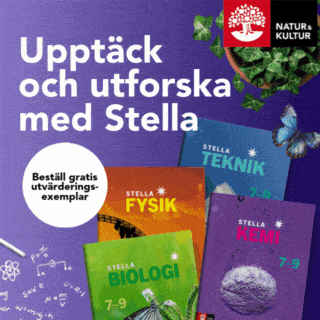Emergence of words: Multisensory precursors of sound-meaning associations in infancy
Eeva Klintfors avhandling visar att spädbarn lär sig ord genom att kombinera olika sinnesintryck. Information via alla sinnen bidrar till helheten: det man hör, ser, smakar, luktar och känner. Det handlar om multisensorisk exponering, säger hon.
Eeva Klintfors
Professor Francisco Lacerda.
Assistant professor Daniel Swingley, University of Pennsylvania, United States
SU – Stockholms universitet
2008-03-13
Ordens uppkomst: Multisensorisk information som ett led i uppkomst av förbindelser mellan ord och betydelse hos spädbarn
Emergence of words: Multisensory precursors of sound-meaning associations in infancy
Insitutionen för lingvistik
Ordens uppkomst: Multisensorisk information som ett led i uppkomst av förbindelser mellan ord och betydelse hos spädbarn
I avhandlingen presenteras fyra experimentella studier, utförda vid fonetik-laboratoriet, Stockholms universitet, om spädbarns förmåga att bilda audio-visuella förbindelser mellan ljud och betydelse, som ett led i ordinlärningen. Studie I rapporterar om effekten av lingvistisk varians på spädbarns förmåga (3 till 20-månader) att skapa audio-visuella associationer. Målord inbäddade i fraser, baserade på ett artificiellt språk (Koponen, 1999), presenterades tillsammans med animerade dockor. Studie II undersöker vilken rollolika typer av attribut har för spädbarns förmåga (3 till 6-månader) att skapa audio-visuella associationer. Tvåordsfraser, baserade på samma artificiella språk som i Studie I, presenterades tillsammans med visuella geometriska objekt. Orden refererade implicit till färg och form hos objekten. Studie III undersöker spädbarns förmåga (12 till 16-månader) att förutsäga fonetisk information. Försökspersonerna testades med avseende på deras förmåga att associera svenska hela ord respektive avbrutna ord till bekantaobjekt. Studie IV undersöker spädbarns förmåga (6 till 8-månader) att upptäcka samstämmighet och synkroni i tal respektive icke-tal. Barnen exponerades för svenska talljud som presenterades medsamstämmiga artikulatoriska rörelser, samt handklappningsljud som presenterades med synkroniserade handklappings-rörelser respektive synkroniserade artikulatoriska rörelser. Resultaten visar att spädbarnet är känsligt för distributionella egenskaper hos auditiv och visuell information (Studie I och II), men ännuoförmögen att förutsäga fonetisk information i början av det andra levnadsåret (Studie III). Spädbarns konceptuella beteende beskrivs som en generell perceptuell process påverkad av percetuell prominens (Studie IV). Resultaten relateras till en arbetshypotes baserad på Ecological theory of language acquisition(Lacerda & Sundberg, 2006), och Lindblom (Lindblom, 1990; Lindblom & Lacerda, 2006).
Emergence of words: Multisensory precursors of sound-meaning associations in infancy
This thesis presents four experimental studies, carried out at the Phonetic laboratory, Stockholm University, on infants ability to establish auditory-visual sound-meaning associations as a precursor of early word acquisition. Study I reports on the effect of linguistic variance on infants ability (3- to 20-months) to establish sound-meaning associations. The target-words embedded in phrases, based on an artificial language, were presented along with visually displayed puppets. Study II investigates the role of attribute type on infants ability (3- to 6-months) to establish sound-meaning associations. Two-word phrases, based on the same artificial language as in Study I, were presented along with visually displayed geometrical objects. The words implicitly referred to the color and shape of the objects. Study III examines infants ability (12- to 16-months) to predict phonetic information. The subjects were tested on their ability to associate Swedish whole words and disrupted words to familiar objects. Study IV investigates infants ability (6- to 8-months) to detect concurrence and synchrony in speech and non-speech. The infants were exposed to Swedish speech sounds presented with corresponding articulatory events, the sound of hand-clapping presented with synchronized hand-clapping movements, and the sound of hand-clapping presented with synchronized articulatory events. The results picture the subject as sensitive to distributional properties of auditory and visual information (Study I and II) but still unable to predict phonetic information, in the beginning of the second year of life (Study III). The infants conceptual behavior is outlined as a general-purpose perceptual process influenced by perceptual salience (Study IV). These results are related to a working hypothesis based on the Ecological theory of language acquisition (Lacerda & Sundberg, 2006), and Lindblom (Lindblom, 1990; Lindblom & Lacerda, 2006).
Relaterade länkar

Juridik
 Gy–Vux
Gy–Vux
Fysisk aktivitet och motorik i förskolan
 Fsk
Fsk


